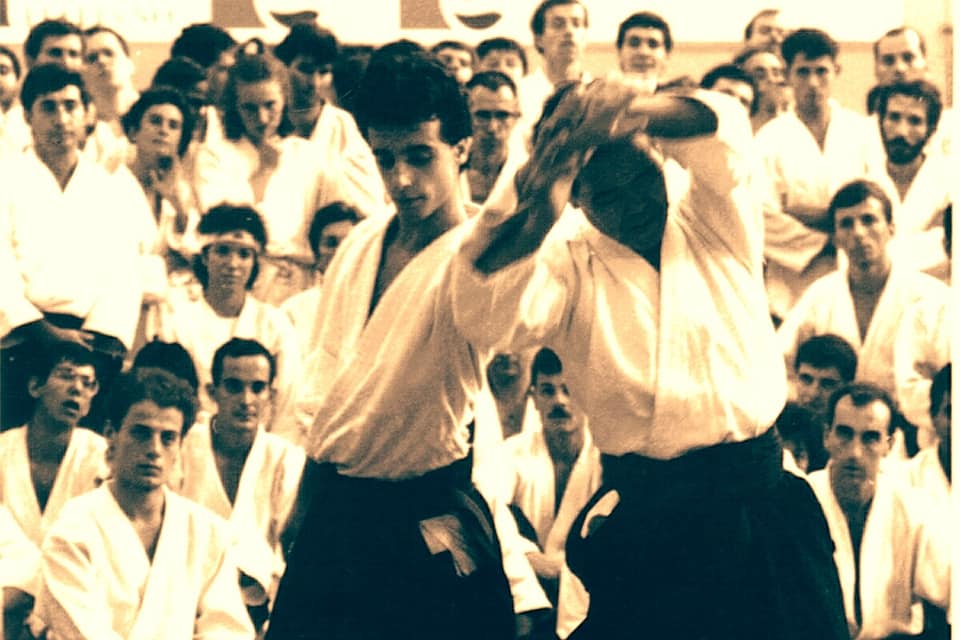After graduating from Waseda University, Hajime worked for several years for the Tokyo Gas Company.
In 1939, he moved to China, to Shanghai, where he created a publication called “Tout Shanghai”.
In parallel with his activities, Iwata sensei opened a dojo, affiliated with Kobukai, in 1940. The difficulties are numerous and Hajime often has to face the challenges of Chinese martial arts fighters.
Like Master Ueshiba, he integrates the kyu / dan system into the functioning of his dojo and teaches with the rank of sixth dan.
Iwata sensei, also uses her skills in Yagyū Shinkage-ryū to teach Kenjutsu to the Japanese army stationed in Shanghai.

Subsequently, Hajime is joined by his former Kobukan partner, Hisao Kamada, to assist him as an assistant instructor. The two men taught together in the Chinese megalopolis until the end of World War II and the surrender of Japan in September 1945.
Hajime Iwata was repatriated to Japan in 1946.
He is one of the few active pre-war instructors to resume teaching and plays a significant role in the development of Aikido in the Nagoya region .
In 1957, he founded a dojo, affiliated with Aikikai, in Ichinomiya, located in his native prefecture of Aichi.
Iwata Sensei was promoted to eighth dan on the occasion of Kagami Biraki in January 1962. He reached this rank in the company of his former partners from the Kobukan era, Rinjiro Shirata and Shigemi Yonekawa.
To be continued
Source: Aikido/Facebook



